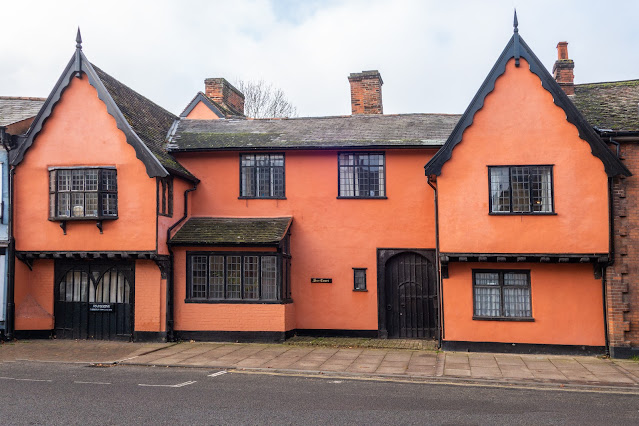Rowden Holiday - Lacock & Bath
This holiday was a family holiday to an area, most of which I had already visited in previous times. However, our family had not, and were rather attracted to one or two places in the area. So, here we are!
We stayed at Rowden Manor, in a converted building on the site.
The converted building in the grounds, part of which we stayed in. We had full access to all the gardens and grounds of the Manor.
The first place we took the family to, was Lacock Abbey, in the National Trust village of Lacock. If you are in this area of the Cotswolds, this is well worth a visit. The village itself is a beautiful place to wander and the Abbey too. In its 800 years of history, Lacock Abbey has been many things. It started as a nunnery in the 1200s before becoming a Tudor family home. Since then it has evolved with every owner and in 1835, the first photographic negative was captured in the Abbey. Today Lacock is a well-known location for a host of film and TV productions including Harry Potter and Downton Abbey. Images from my previous visit can be seen here on a previous blog.
Next day we visited Bath, primarily to get some images of the Cathedral, while the family perused the town.
An image of the Abbey taken on a previous visit. All other are from this visit in 2025
Since it was founded in the 7th century, Bath Abbey has undergone a great deal of work, being reorganised in the 10th century and rebuilt in the 12th and 16th centuries. Major restoration work was also carried out by Sir George Gilbert Scott in the 1860s.
Three different churches have occupied the site of the Abbey since 757 AD. First, an Anglo-Saxon monastery which was pulled down by the Norman conquerors of England; then a massive Norman cathedral which was begun about 1090 but lay in ruins by late 15th century; and finally, the present Abbey Church, which started in around 1499, as we now know it.
When the Abbey was raised to cathedral status in 1090, it was felt that a larger, more up-to-date building was required. John of Tours planned a new cathedral on a grand scale, dedicated to Saint Peter and Saint Paul, but only the ambulatory was complete when he died in December 1122. Unfortunately, a major fire destroyed the half-finished cathedral in 1137, however work continued under Godfrey, the new bishop, until about 1156 when it was finally complete.
The abbey was stripped of its co-cathedral status in the aftermath of the Dissolution when the cathedral was consolidated in Wells. All of the lead, iron and glass in the building was stripped away and the church was left to decay. It was then sold it to Matthew Colthurst of Wardour Castle in 1543, and his son Edmund Colthurst gave the roofless remains of the building to the corporation of Bath in 1572. The corporation had difficulty finding private funds for its restoration.
In 1573, Queen Elizabeth I licensed a seven-year nationwide collection to support the rebuilding of the Abbey. Over the following 50 years, the Abbey was transformed from a ruin to a church which the city could be proud of. Once the church had been rebuilt, it could serve the city effectively and its growing numbers of well-to-do but sickly visitors. This meant that the number of monuments grew in the Abbey to become the largest collection of any church in the country: 891 stones on the floor and 635 around the walls. As you can imagine, they are everywhere you look!
A statue of Mary which I believe was lent to the Abbey for a period, by the artist who made it.
High Altar and Reredos.
The reredos is a decorative screen or panel that was installed behind the altar in the 1870s. It was a part of the extensive renovations and restorations carried out by the architect Gilbert Scott. Specifically, a plain reredos of blank arcading was designed to fit under the east window. This reredos replaced a marble altarpiece that was previously there.
This window shows the crowning of Edgar. Edgar was crowned first 'King of All England' in the Anglo-Saxon Abbey here in 973. The Archbishop of Canterbury, called Dunstan, wrote the service. This event became the template for all subsequent coronations, including that of King, Charles III, in May 2024.
From the Bath Abbey website:
One piece of wood carving that was completed in 1947 that you can see today is on the big wooden front door of the Abbey. This door is called the West Front door and was given to the Abbey in 1617 by Sir Henry Montagu, the Lord Chief Justice, in memory of his brothers Bishop James Montagu and Sir Walter Montagu. The door is decorated with three shields displaying the coats of arms of the three Montagu brothers. In 1947, the lowest coat of arms, in the middle of the door needed to be repaired.
Following our brief wander around a very crowded Abbey, we strolled the town briefly and came across a busker or two. We watched the guy pretending to sit and the guitarist who was rather good.
Then we headed back to our base, ready to plan the next visit.













Comments